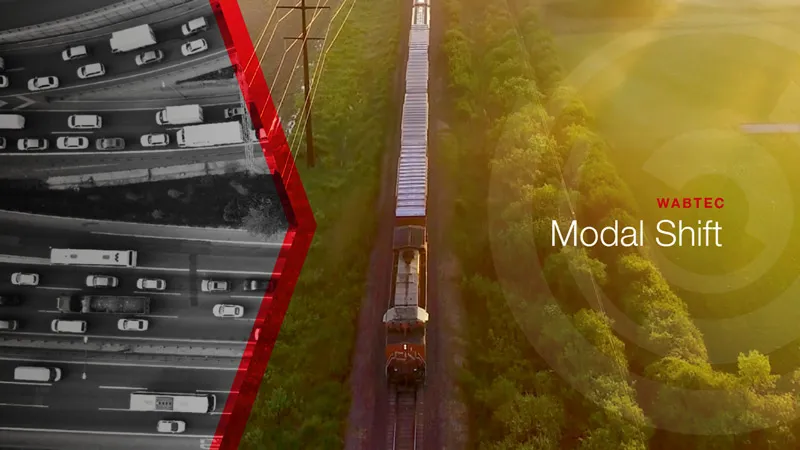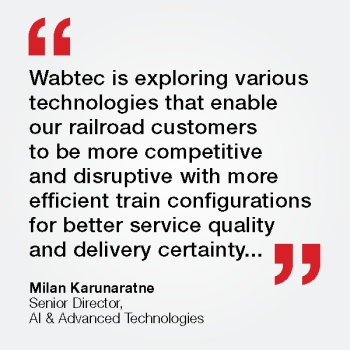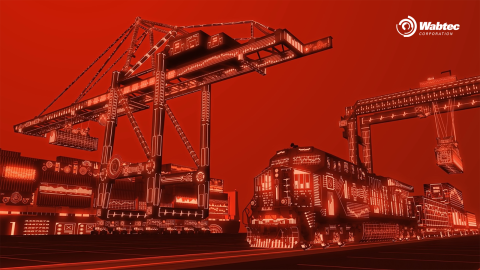Pioneering a carbon-free freight era is no small feat. It requires a more efficient and greenhouse-gas-free rail network that can be competitive and sustainable. With over 140,000 miles of track across the U.S. freight corridors, investment in the future of rail benefits both urban and rural communities.
Utilizing more rail and less trucks would be a game-changer:
- A single freight train can move a ton of freight 472 miles on one gallon of fuel. A truck only gets 134 miles per ton, out of a gallon. (1,000 gallons of fuel saved per carload.)
- Rail moves 40% of freight (per ton-mile) and accounts for less than 1% of total U.S. greenhouse gas emissions.
Rail also represents the most cost-effective, energy-efficient, and safest mode of moving people and freight on land. Current trends indicate that freight and passenger activity will more than double by 2050 as the sector pushes for cleaner transportation. The reality is that achieving sustainability by reducing carbon is a tall order that requires a big shift—a modal one.
In essence, a “modal shift” (in this context) would mean a change from one form of transportation to another in order to move freight, for example, switching out more trucks to rail. It’s also a new way of thinking about how freight moves from point-to-point. It encourages innovation, and at its core, pushes people towards more sustainable transport.
“We have one of the most reliable and efficient fleet of locomotives on the continent and many of the locomotives hauling freight today in North America were built by Wabtec. We have made it our business to become more reliable and more efficient for the 25 years that I've been in the industry,” says Gina Trombley, Wabtec’s EVP and Chief Commercial Officer. “ It's not a silver bullet discussion. It’s about an incessant focus on having the best possible technology on the head end of the train, which is the locomotives.”.
But what would a modal shift actually look like in practice?
Centering the Customer
For Trombley, the modal shift is about driving consistent reliability when service and price can serve as blockers to organic growth. Especially, having a commitment to innovating and developing cutting-edge technology. But she says the real key is the customer.
“We are a key technology partner to the safe, efficient, and on time operations for our customers. So, the more we can invest in technology that allows them to improve this service, the better,” says Trombley. “The more reliable the locomotives that are hauling those intermodal cars are, the better the company is going to be, and the better the railroads are going to operate. The secret sauce for Wabtec is to be closer to the customer now more than ever,” says Trombley.
One of Wabtec’s newest digital offerings is already driving customer rail consistency and reliability.
The Next Generation Terminal Operating System (NG TOS), is a cloud-based software that helps train terminals manage tasks more efficiently with a powerhouse of features including: a customizable rules engine, effortless systems integration, and integrated analytics to optimize workflow management.
Milan Karunaratne, Senior Director, AI & Advanced Digital Technologies at Wabtec, agrees that ultimately, it’s the customers who decide on the modal shift, and the goal is service quality.
“Why can’t more freight move on rail? What are the problems that need to be solved? The shift comes through things like investing in network and yard optimization and bringing in more visibility of shipments. He adds, “Wabtec is exploring various technologies that enable our railroad customers to be more competitive and disruptive with more efficient train configurations for better service quality and delivery certainty,”
“Think about it as you're taking a nonstop flight from LA to New York versus a flight from LA to New York where you stop in Phoenix, then in Dallas; what is the probability of you getting to New York on time? Much lower than if you took a direct flight, right? It's the same concept with rail,” says Karunaratne.
The Shift in Action
Wabtec’s current suite of Scheduling, Planning, and Optimization tools offers real-time clarity and swift solutions to keep bustling railroads and drivers on track and able to correct errors faster.
The Movement Planner (MP) provides optimal freight movement, ETA services and traffic-planning so freight can get to its destination more efficiently.
Combining increased shipment visibility, dynamic planning tools, and decision support, the Yard Planner is unlocking productivity for yard networks.
The Port Optimizer tool empowers the supply chain to stay two steps ahead. With cross-functional communication and delivery excellence, it enables efficiency through a holistic view of on-time, clean, and unified data.




